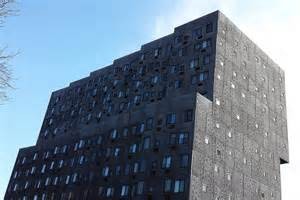 I came across a new term the other day: NOAH. It stands for “naturally occurring affordable housing” and it was coined by Howard Husock and Alex Armlovich of the Manhattan Institute. Their paper is focused on New York City, specifically Mayor Di Blasio’s plan to build 80,000 new “permanently affordable” rental units over ten years. The researchers found that there are almost 50,000 NOAHs already in existence, that is, “apartments that overlap in price with the mayor’s affordability targets but that are currently available and require no additional government investment.” These apartments are in less expensive parts of the city, as one would expect. Husock and Armlovich’s general thesis is interesting. Advocates of affordable housing usually take it for granted that any solution requires building new housing. New publicly-financed housing is more expensive than existing market housing, in part because it involves public agencies, architects, social workers, etc., in part because affordable housing standards usually exceed what the market provides, and in part simply because new housing costs more than existing housing (by the same logic, lower-income people tend to drive used cars not this year’s model). Just how much more expensive was demonstrated by the Sugar Hill Development (illustrated) which was praised by New York magazine as “the kind of high-design, low-cost housing that the city needs.” Built by a non-profit in Harlem, and designed (in hip, forbidding black by David Adjaye), the project reached a cost of $550,000 per unit, well above the city average. High-design, maybe, but definitely not low-cost.
I came across a new term the other day: NOAH. It stands for “naturally occurring affordable housing” and it was coined by Howard Husock and Alex Armlovich of the Manhattan Institute. Their paper is focused on New York City, specifically Mayor Di Blasio’s plan to build 80,000 new “permanently affordable” rental units over ten years. The researchers found that there are almost 50,000 NOAHs already in existence, that is, “apartments that overlap in price with the mayor’s affordability targets but that are currently available and require no additional government investment.” These apartments are in less expensive parts of the city, as one would expect. Husock and Armlovich’s general thesis is interesting. Advocates of affordable housing usually take it for granted that any solution requires building new housing. New publicly-financed housing is more expensive than existing market housing, in part because it involves public agencies, architects, social workers, etc., in part because affordable housing standards usually exceed what the market provides, and in part simply because new housing costs more than existing housing (by the same logic, lower-income people tend to drive used cars not this year’s model). Just how much more expensive was demonstrated by the Sugar Hill Development (illustrated) which was praised by New York magazine as “the kind of high-design, low-cost housing that the city needs.” Built by a non-profit in Harlem, and designed (in hip, forbidding black by David Adjaye), the project reached a cost of $550,000 per unit, well above the city average. High-design, maybe, but definitely not low-cost.

